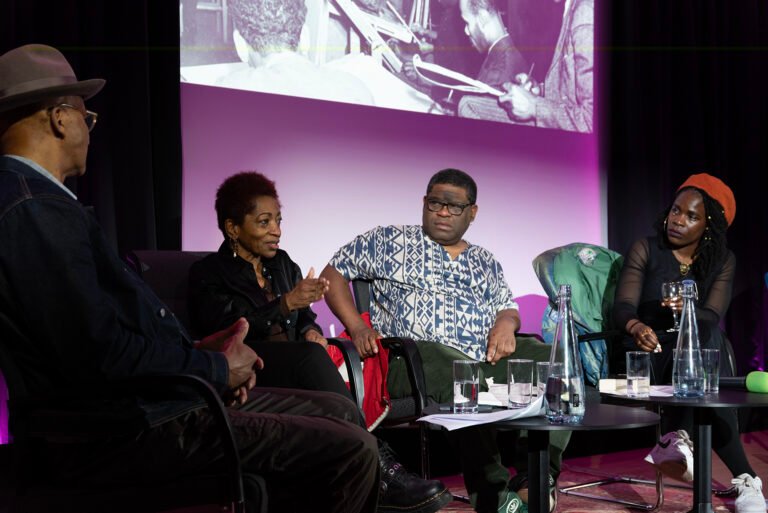The UK’s first academic study on diversity in the publishing industry (2020) found that writers of colour are often limited by restrictive ideas. The research found that, for writers of colour wanting to write beyond their racialised experiences, support and success in the world of publishing was limited, resulting in these writers being pigeonholed – unable to find a market beyond their racial or ethnic identity.
In the UK, the publishing industry remains overwhelmingly – 86% – white. Black writers – or writers who happen to be Black – who enter this predominantly white world are habitually defined by their Blackness. Work from these artists gets squeezed into the confines of a racial or ‘Black box’, restricting art to their racialised experiences and racial trauma or pain, limiting what it means to be a ‘Black writer’ or a ‘writer of colour’.
What is means to be a writer of colour
The conversation about what it means to be a ‘writer of colour’ has persisted for generations. Almost 100 years ago, American writer and poet Langston Hughes reflected on the importance of the “Negro artist [being] free to choose what he does”.
And in Nobody Knows My Name, James Baldwin explains that he emigrated from the racism of 1950s America – his home – to prevent himself from becoming restricted by the limitations of being labelled solely a “Negro writer”.
Toni Morrison refused to be pigeonholed as an African American writer. She accepted the title of ‘black woman writer‘, understanding it as a valuable positionality from which she could write rich, imaginative art – a place, as bell hooks put it, “in the margins”.
In all these writers’ unpicking of what it means to be a ‘writer of colour’, there is a necessary and much-needed nuance. There is an understanding that the unavoidable reality of racialisation impacts and affects the work of writers of colour – as it affects them in their everyday lives – but that, at the same time, art from writers of colour is not, and should not, be bounded or restricted by this racialisation.
Race may be a topic some Black writers want to write about. And it might not. Either way, the moniker ‘Black writer’ or ‘writer of colour’ should not be a confining one.
Showcasing ‘uncommonly aspirational work’
Opportunities for writers of colour to exist as writers of colour: unbounded, unconfined – able to write about whatever they want – are critical in overcoming prescribed racial moulds and outdated ideas about what writers of colour can and can’t engage with.
Earlier this month, WritersMosaic – an online magazine celebrating UK writers of the Global Majority – launched a new print publication: WritersMosaic Quarterly. It’s a publication by and primarily featuring Global Majority writers dedicated to experimentation and exploration – something often denied to them.
Published as an independent quarterly insert in The Bookseller, the new publication is first and foremost a space for Global Majority writers to write outside of prescribed racial limitations – unboundaried, new and exciting writing of the highest standard.
As our director and editor Colin Grants says: “WritersMosaic Quarterly showcases uncommonly aspirational work from writers primarily of the global majority… I know that sounds like hyperbole but such writers rarely get a chance to spend time outside of their designated racial box.”
Power in occupying a space
Carefully thought-out initiatives like this avoid the all too common tokenism of diversity initiatives in the arts. Although predominantly for writers of colour, the quarterly welcomes all writers, encouraging a movement of flowing ideas and perspectives. “Our focus is on the art of writing, not representation,” says Grant.
I’m proud to be one of the contributors to the first edition, which is entitled: Malcolm X: By any means necessary, which explores his global legacy. The essays are varied and experimental, including reflections on whether Malcolm X would survive today’s cancel culture, to imagining his return to a fictional place. These literary treasures are allowed to unfurl between the pages of the quarterly – a space dedicated to the art of writing.
I am a writer. And I am a Black woman. In a perfect world, the combination of these three characteristics would not be restrictive. Being a Black woman writer is not something to run from or be limited by. There is power in occupying a space, as Morrison acknowledged, separate from the mainstream.
Spaces in the arts – like the new WritersMosaic Quarterly – which meaningfully expand the literary space occupied by writers of colour are sorely needed. These are spaces which allow for nuance, recognising that to be a writer of colour is to write about whatever you want.
The online edition of the WritersMosaic Quarterly is available here.





